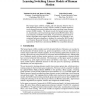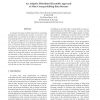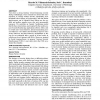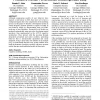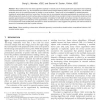611 search results - page 19 / 123 » Using GP to Model Contextual Human Behavior |
NIPS
2000
13 years 9 months ago
2000
The human figure exhibits complex and rich dynamic behavior that is both nonlinear and time-varying. Effective models of human dynamics can be learned from motion capture data usi...
ICTAI
2007
IEEE
14 years 2 months ago
2007
IEEE
An adaptive boosting ensemble algorithm for classifying homogeneous distributed data streams is presented. The method builds an ensemble of classifiers by using Genetic Programmi...
CHI
2010
ACM
14 years 2 months ago
2010
ACM
Users have a strong tendency toward dismissing security dialogs unthinkingly. Prior research has shown that users' responses to security dialogs become significantly more tho...
CHI
2004
ACM
14 years 8 months ago
2004
ACM
Although engineering models of user behavior have enjoyed a rich history in HCI, they have yet to have a widespread impact due to the complexities of the modeling process. In this...
PAMI
2010
13 years 6 months ago
2010
—Many traditional two-view stereo algorithms explicitly or implicitly use the frontal parallel plane assumption when exploiting contextual information since, e.g., the smoothness...
